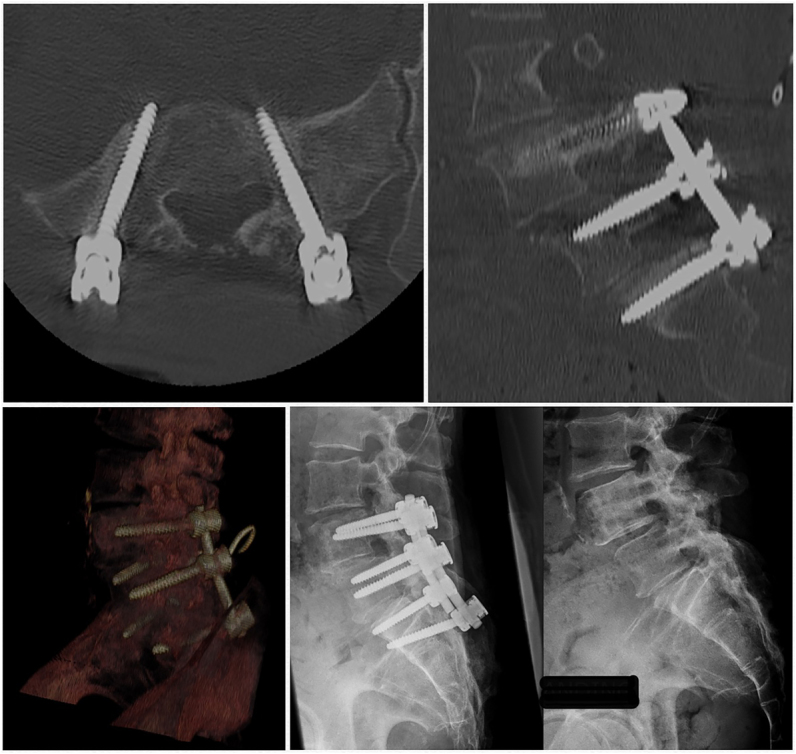BACKGROUND
Loose/broken pedicle screws cause failure of instrumented spinal fusions.1 We describe a technique (used once but feasible for future cases) to remove a loose sacral (S1) pedicle screw complicated by spinal infection (deeply buried and internally migrated). Unlike other pedicle screws, S1 screws are inserted bi-cortically. Use of a screwdriver results in the screw revolving on its own axis; pulling using pliers or cutting a core around the screw could result in deeper migration of the screw into the pelvis or fractured pedicle.
TECHNIQUE
First, newly formed bone is curetted. A 2mm burr is used to expose 30% of the circumference of the superior aspect of the screw, exposing at least two threads. This permits fixing of the loose screw into the burr-created space. A steady pull on a double loop of Vicryl-1 around the exposed threads prevents internal migration, while a Swedish dissector 7/8′′ 200mm pushes each subsequent screw thread sequentially out of the pedicle (Figures 1 and 2).
Figure 1 .

Computed tomography scan and lateral X-ray showing hardware failure (loose and buried S1 pedicle screw)
Figure 2 .
Technical steps. (a) Loose buried sacral screw, (b) Drilling 30% circumference, (c) Pull with vicryl, (d) Push with dissector and (e) Screw extraction.
DISCUSSION
Techniques described in the literature for broken pedicle screw removal include drilling of a central/peripheral pilot hole2 with retrieval using an extractor/screwdriver, a peripheral pilot hole in pedicle and clockwise drilling to achieve counter-clockwise screw rotation,3 friction and a grabbing technique using specially designed retrieval instruments4 or insertion of a second screw leaving the broken fragment in situ.5 If the screw fragment is loose and buried (this case), then removal can be more complicated and risk intrapelvic migration. This technique prevents the risk of deeper screw migration and retrieval is achieved without further violation of pedicle tract integrity.
References
- 1.Esses SI, Sachs BL, Dreyzin V. Complications associated with the technique of pedicle screw fixation. A selected survey of ABS members. Spine 1993; 18: 2231–2239. 10.1097/00007632-199311000-00015 [DOI] [PubMed] [Google Scholar]
- 2.Weng X, Qiu G, Li Jet al. An innovative broken pedicle screw retrieval instrument. J Spinal Disord Tech 2007; 20: 82–84. 10.1097/01.bsd.0000211257.82755.f6 [DOI] [PubMed] [Google Scholar]
- 3.Duncan JD, MacDonald JD. Extraction of broken pedicle screws: technical note. Neurosurgery 1998; 42: 1399–1400. 10.1097/00006123-199806000-00138 [DOI] [PubMed] [Google Scholar]
- 4.Miyamoto K, Shimizu KJ, Ken Kouda DMet al. Removal of broken pedicle screws. J Neurosurg 2001; 95: 150–151. 10.3171/spi.2001.95.1.0150 [DOI] [PubMed] [Google Scholar]
- 5.Elgafy H, Miller J, Benedict Get al. Proposed alternative revision strategy for broken S1 pedicle screw: radiological study, review of the literature, and case reports. Spine J 2013; 13: 796–802. 10.1016/j.spinee.2013.03.018 [DOI] [PubMed] [Google Scholar]



